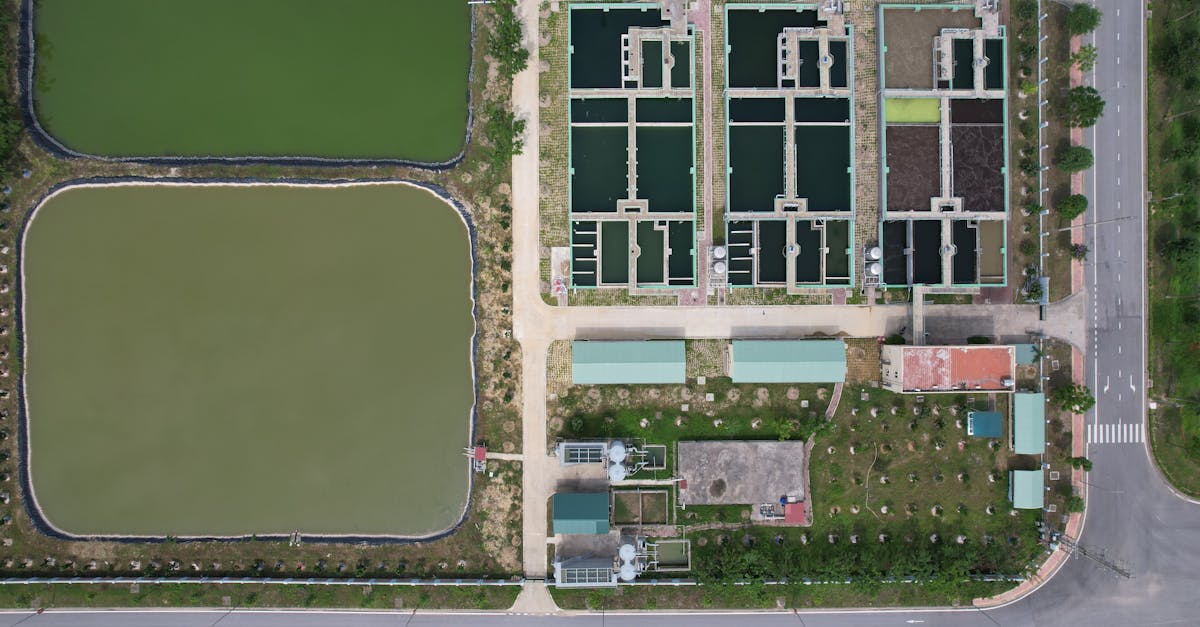Key Takeaways
- Business Process Automation (BPA) enhances efficiency in energy production and distribution by streamlining tasks like equipment monitoring, data analysis, and technician scheduling.
- Real-world examples demonstrate BPA's impact, including integrating renewable energy sources, optimizing energy grids, and leveraging predictive maintenance to reduce downtime.
- Cost savings are a significant benefit, achieved through resource optimization, automated workflows, and tools like field service CRM platforms for better customer engagement.
- Challenges such as data accuracy, legacy systems integration, and cybersecurity risks must be addressed to ensure seamless BPA implementation in the energy sector.
- Future trends include AI-driven predictive analytics, hybrid renewable systems, decentralized microgrids, and mobile workforce management for improved reliability and sustainability.
Automation is reshaping industries, and energy production and distribution are no exception. With global energy demand expected to increase by nearly 50% by 2050, finding efficient solutions has never been more critical. That’s where Business Process Automation (BPA) steps in, streamlining operations and reducing costs while enhancing reliability.
In the energy sector, BPA helps us tackle complex challenges like grid management, resource allocation, and predictive maintenance. From automating routine tasks to optimizing large-scale systems, it’s revolutionizing how we produce and deliver power. By exploring real-world examples of BPA in action, we can uncover its transformative impact on this essential industry.
Understanding BPA In Energy Production And Distribution
Business Process Automation (BPA) plays a critical role in modern energy systems. It simplifies operations, enhances efficiency, and integrates advanced technologies to meet growing energy demands.
What Is BPA?
BPA uses technology to automate repetitive processes across industries. In energy production and distribution, it helps manage tasks like data analysis, monitoring equipment, and resource allocation without human intervention. By automating workflows, BPA reduces errors and improves operational speed.
For example, automated field service solutions can streamline maintenance scheduling by predicting when equipment requires servicing. Tools like technician scheduling software or route management software optimize workforce assignments for faster response times. These automation tools minimize downtime while cutting costs.
In addition to operational efficiencies, BPA supports decision-making through real-time data analytics. Whether monitoring grid performance or analyzing renewable energy outputs, automation provides actionable insights quickly. This approach helps companies adapt to dynamic market conditions efficiently.
Importance Of BPA In Energy Systems
BPA transforms how energy is produced and distributed by addressing industry challenges head-on. One key benefit is improved reliability; with predictive maintenance supported by technician management software or mobile workforce management tools, issues are resolved before they escalate into outages.
Cost savings also emerge as a significant advantage of automation. Service dispatch software eliminates inefficiencies in resource allocation by assigning technicians based on optimized routes using tools like technician route optimization systems or job scheduling software for technicians.
Customer engagement improves through platforms such as field service CRM or service business customer portals that offer transparency around scheduled services or disruptions. These systems foster trust between providers and consumers while ensuring consistent communication throughout the process.
Energy providers leverage these advantages to remain competitive amidst increasing demand while maintaining system stability—a win-win for businesses and consumers alike.
Real-World Examples Of BPA Applications
Business Process Automation (BPA) drives efficiency and innovation in energy production and distribution. Let's explore its impact through practical examples.
Optimizing Energy Production
Hydroelectric pumped storage enables large-scale energy reserves to support variable generation resources like wind power. At the John W. Keys III Pumping Plant, modifications help balance intermittent wind energy inputs, fostering stability across the grid. Banks Lake also plays a pivotal role in this integration effort.
Wind power integration has surged under BPA's initiatives. Capacity grew from 25 MW in 1998 to 2,780 MW by January 2010, with projections reaching up to 6,000 MW by late 2013. These advancements demonstrate how BPA adapts renewable technologies for scalable energy production.
Improving Grid Distribution Efficiency
Efficient grid management reduces transmission losses and enhances reliability during peak loads. BPA applies real-time data analytics to monitor system performance and predict faults before they occur. This proactive approach minimizes downtime and extends infrastructure lifespan.
Automated tools like technician scheduling software streamline maintenance operations across vast service areas. By optimizing routes for field technicians, utilities cut response times while improving grid performance. Route management software ensures faster repairs, reducing risks of prolonged outages.
Case Studies In Renewable Energy Integration
BPA showcases successful renewable energy projects that integrate solar and wind into existing grids seamlessly. For instance, collaboration with regional stakeholders has enabled hybrid systems combining solar arrays with battery storage solutions to compensate for variability in sunlight availability.
These integrations benefit customers through consistent service delivery while lowering reliance on fossil fuels. Predictive maintenance powered by automation tools further supports uninterrupted renewable energy supply chains, ensuring sustainable progress in clean energy adoption trends globally.
Benefits Of BPA Adoption
Business Process Automation (BPA) transforms energy production and distribution by optimizing operations, reducing costs, and improving system reliability. These advancements directly address the growing complexities of managing energy resources effectively.
Enhanced Operational Efficiency
BPA streamlines repetitive tasks like data collection, equipment monitoring, and technician scheduling. For example, tools such as technician scheduling software and route management solutions automate maintenance planning to reduce delays and improve response times. By eliminating manual processes, teams can focus on higher-value activities like analyzing performance trends or innovating new strategies.
Automated systems also enable better integration of renewable energy sources. Hydroelectric facilities using wind power balancing solutions demonstrate this efficiency by seamlessly adjusting grid inputs in real time. Advanced algorithms handle fluctuating generation levels without manual intervention, ensuring consistent energy delivery while maintaining grid stability.
Field service automation plays a key role here too. With mobile workforce apps or service dispatch software, technicians receive updates instantly on their devices. This reduces downtime during emergencies and accelerates fault resolution across distributed assets. The result is faster repairs with fewer disruptions.
Cost Savings And Resource Management
Automation minimizes operational costs through optimized resource allocation and predictive analytics. For instance, predictive maintenance alerts operators about potential equipment failures before they occur, preventing costly breakdowns or extended outages.
Service business automation tools like field service CRM platforms help manage customer communications efficiently—keeping consumers informed while cutting down administrative expenses. Additionally, automated invoicing software eliminates billing errors that could lead to revenue losses or disputes over payments.
Energy providers adopting BPA can use advanced modeling systems to maximize asset utilization without overloading infrastructure capacity. Hydroelectric pumped storage facilities are an excellent example of how surplus renewable energy gets stored for later use—reducing waste during off-peak hours while meeting demand spikes economically.
Challenges And Considerations
Balancing innovation with operational efficiency in energy production and distribution presents several challenges. BPA's integration of advanced systems introduces complexities requiring precise management.
Data Accuracy And Quality
Maintaining accurate data is critical for BPA's operations. Errors in energy generation or usage data can disrupt grid stability and resource allocation. For example, if wind power output data from the Columbia River Gorge contains inaccuracies, hydroelectric pumped storage adjustments may fail to balance supply and demand effectively.
Automated systems help reduce manual input errors but depend on quality source data. Inconsistent reporting from renewable sources complicates real-time analytics. Poor-quality inputs lead to flawed system decisions, such as misallocating reserves during peak energy demand periods.
We also face issues with legacy systems holding outdated formats incompatible with modern software solutions. Integrating these older platforms into automated processes often requires specialized tools or custom development projects that increase costs and delay implementation timelines.
Security And Privacy Issues
Cybersecurity risks grow as BPA adopts interconnected technologies like Automatic Generation Control (AGC) and conditional firm services. These systems rely on extensive communication networks vulnerable to hacking or unauthorized access, posing threats to grid integrity.
Data privacy becomes another concern when customer information is used for predictive analytics or service optimization. Mishandling sensitive details could result in regulatory penalties or loss of trust among stakeholders relying on BPA's transparency initiatives.
To mitigate risks, we implement multi-layered security protocols but must continuously adapt defenses against evolving cyberattack methods. However, this adds complexity to maintenance efforts while stretching financial resources allocated for broader innovations within the energy sector.
Future Outlook For BPA In Energy
The future of energy production and distribution heavily incorporates the Bonneville Power Administration's (BPA) strategies. As renewable energy adoption grows, BPA's role in integrating these sources becomes critical.
Emerging Trends And Technologies
BPA focuses on expanding renewable energy capacity through innovative technologies. Hydroelectric power remains a cornerstone, but advancements like dynamic grid systems and improved battery storage play a growing role. These technologies enhance grid flexibility by balancing intermittent sources like wind or solar with consistent hydroelectric outputs.
Artificial intelligence (AI) is shaping predictive maintenance and resource optimization. By analyzing performance data, AI predicts equipment failures before they occur, reducing downtime and repair costs. Automated field service solutions support this shift by streamlining technician dispatch and task management using tools like route management software.
Decentralized energy systems are gaining traction as well. Microgrids powered by BPA resources offer localized control, increasing resilience during outages. With mobile workforce management becoming more common, technicians can monitor such systems remotely via apps for real-time updates.
Potential Impacts On The Energy Sector
Increased automation impacts efficiency across the sector. Tools like technician scheduling software improve maintenance workflows, while field service CRM platforms strengthen communication between providers and consumers. This fosters trust through transparent operations.
Renewable integration enhances sustainability efforts. Hybrid models combining solar panels with BPA’s hydroelectric projects reduce dependency on fossil fuels while maintaining reliable electricity supplies during peak demand periods.
Economic benefits include cost savings from optimized resource use and reduced operational expenses due to automated invoicing software adoption. Additionally, customer engagement improves as service portals provide detailed usage insights for informed decisions about energy consumption patterns.
As these trends expand, BPA continues driving innovation while addressing challenges posed by evolving consumer demands and technological shifts in the industry landscape.
Conclusion
Business Process Automation continues to redefine energy production and distribution, offering innovative solutions for a rapidly evolving industry. By integrating automation with advanced technologies, we can tackle rising energy demands while maintaining efficiency, reliability, and cost-effectiveness.
As the energy landscape shifts toward renewable sources and smarter grids, BPA positions us to adapt seamlessly. Its ability to optimize resources, enhance decision-making, and improve customer engagement ensures that both providers and consumers benefit from streamlined operations.
While challenges like data accuracy and cybersecurity require attention, the potential of BPA far outweighs these hurdles. Embracing automation not only supports sustainability but also equips us to navigate the complexities of tomorrow's energy needs confidently.
Frequently Asked Questions
What is Business Process Automation (BPA) in the energy sector?
Business Process Automation (BPA) in the energy sector refers to using technology to automate repetitive tasks, streamline operations, and improve efficiency. It helps manage processes like data analysis, technician scheduling, predictive maintenance, and resource allocation. BPA ensures reliable energy production and distribution while reducing costs.
How does BPA address growing global energy demands?
BPA enhances operational speed and reduces errors by automating tasks such as grid management and equipment monitoring. It integrates advanced technologies for real-time data analytics and predictive maintenance, enabling energy providers to adapt quickly to rising demand while optimizing resources.
What are some examples of BPA tools used in the energy industry?
Examples of BPA tools include technician scheduling software, route optimization platforms, field service CRM systems, automated invoicing tools, and real-time data analytics solutions. These tools improve efficiency by minimizing downtime and enhancing maintenance operations.
How does BPA support renewable energy integration?
BPA assists renewable energy integration by optimizing hybrid systems like solar arrays with battery storage or hydroelectric facilities balancing wind power inputs. Predictive maintenance powered by automation also ensures a sustainable supply chain for clean energy adoption.
What are the main benefits of implementing BPA in the energy sector?
Implementing BPA improves operational efficiency, reduces costs through optimized resource allocation, minimizes equipment failures via predictive analytics, enhances reliability with automated systems, supports renewable integration efforts, and fosters better customer engagement through transparent communication platforms.
Does BPA help reduce costs for energy providers?
Yes! By automating repetitive processes like billing or resource allocation and preventing costly equipment failures via predictive maintenance tools, BPA significantly reduces administrative expenses and operational costs for energy providers.
How does predictive maintenance work within a BPA framework?
Predictive maintenance uses real-time data analytics to monitor equipment performance. Automated systems predict potential faults before they occur so that repairs can be scheduled proactively—minimizing downtime while extending asset lifespans.
Are there challenges when adopting Business Process Automation in the energy sector?
Yes. Challenges include ensuring accurate data quality to maintain grid stability, integrating legacy systems with modern technologies (which can increase costs), addressing cybersecurity risks from interconnected networks, and safeguarding customer privacy.
How does automation enhance customer engagement in the energy industry?
Automation improves customer engagement by offering transparency through service portals that provide detailed usage insights. Tools like automated invoicing ensure accurate billing while consistent communication builds trust between consumers and providers.
What role will AI play in future business process automation for the energy industry?
AI will play a significant role by enhancing dynamic grid systems with predictive capabilities. It will optimize resource use further by forecasting equipment failures or market trends while boosting grid flexibility through intelligent decision-making algorithms.





